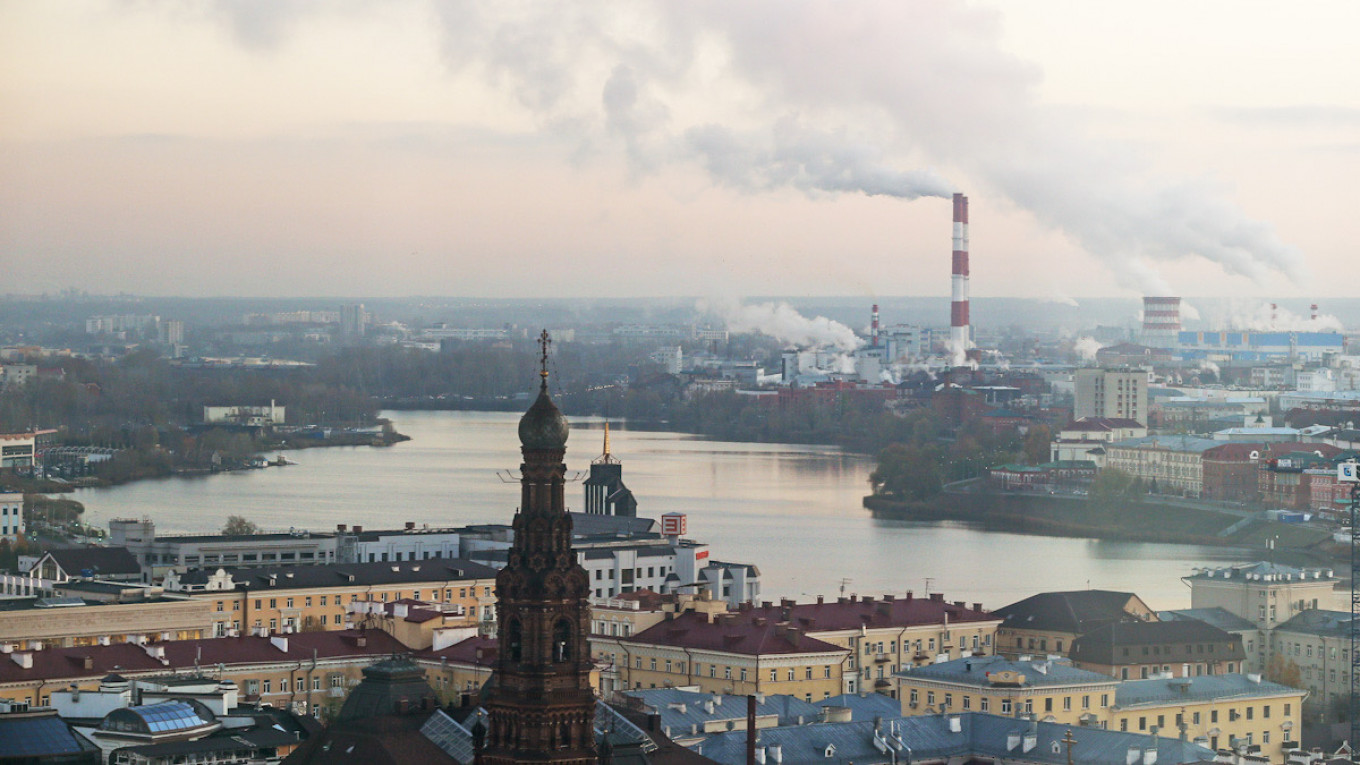
Russia has measured its highest levels of air pollution in 16 years, according to expert analysis cited by the RBC news website Tuesday.
Experts found three times as many “high” and “extremely high” air pollution instances in the first nine months of 2020 than in all of 2019, the outlet cited the Finexpertiza consulting firm as saying.
Russia’s Hydrometeorology Center, whose data Finexpertiza based its study on, has recorded 171 “high” or “extreme” instances of pollution so far, the highest total since data became available in 2005. July-September saw 125 instances alone, one fewer than in all of 2010 and double the yearly number in 2019.
The study identified the carcinogen benzopyrene and poisonous gas hydrogen sulfide as the main pollutants.
“High” pollution refers to the concentration of one or more pollutants at 10 or more times the maximum permissible levels. “Extreme” pollution refers to concentrations of pollutants between 20 and 50 times the allowable levels, which are accompanied by persistent smells, acid rain and other visual or sensory signs.
Finexpertiza president Yelena Trubnikova said that this spring’s widespread coronavirus lockdowns did not significantly reduce air pollution overall.
“It was often suggested at the beginning of the coronavirus pandemic that closing businesses and reducing traffic would have a positive impact on the environment,” Finexpertiza president Yelena Trubnikova said.
“But the situation may not be so simple: Key industrial facilities continued operations while environmental compliance issues may have taken a backseat during the pandemic,” she added.
Roman Pukalov, the head of Russia’s Green Patrol NGO, told RBC that 2020’s record-setting air pollution is the result of an increase in government-mandated measurements and not necessarily higher levels of pollutant emissions.
Finexpertiza said the record could also be linked to a series of major accidents that caused toxic emissions at production facilities this year, according to RBC.
RBC reported that Russia’s Hydrometeorology Center measures air pollution with stationary and mobile observation stations that are placed near facilities that are likely to harm the environment. Owners of these companies are required to install monitoring systems.
